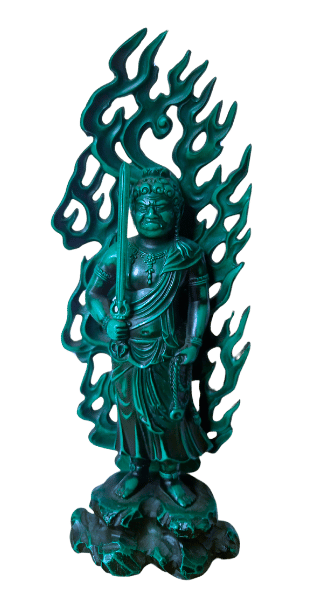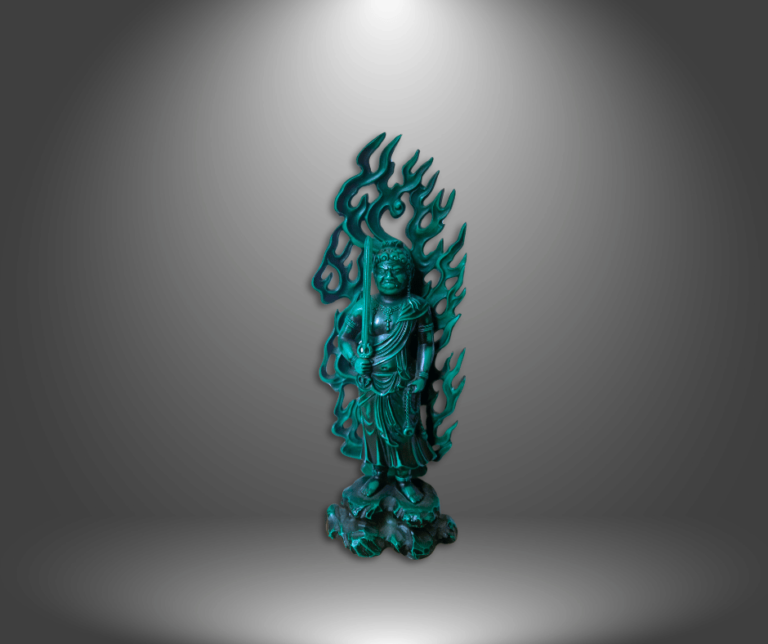
Acala, called O-Fudo-sama, is a prominent Buddhist figure who guides individuals toward truth and salvation. His depiction features a fierce countenance, symbolizing his unwavering commitment to assisting others. In his right hand, he wields a sword, while in his left hand, he holds a lasso, and a flaming halo often encircles him. This statue is based on the original model created by the esteemed sculptor Makita Shuun. This representation of Acala exemplifies the artistry and craftsmanship inherent in Takaoka copperware. Crafted using traditional methods, it embodies the strength of the sincere prayers directed toward Acala. Takaoka copperware has a rich history exceeding 400 years, and it is recognized in Japan and internationally. This traditional craft employs various techniques to produce multiple metal goods, particularly copperware.
Makita Shuun was born in Shizuoka Prefecture in 1917. He commenced his studies under the tutelage of sculptor Mochizuki Hideaki in 1932. By 1953, he had begun carving sculptures and Buddhist statues for various shrines and temples throughout Japan, including notable work for the bell tower and main hall of the Higashikanagawa Kodo Kyodan sect. In 1973, he exhibited his work at the Mitsukoshi main store in Nihonbashi, Tokyo, to preserve traditional techniques, for which he received a letter of appreciation from the governor. In 1985, he carved a replica of the Namikiri Fudoson, a culturally significant property, for the South Temple of Mount Koya in Wakayama Prefecture. In 1989, he created a standing statue of Ippen Shonin, the founder of the Jishu sect, for Kyojuji Temple located in Tomobe-cho, Ibaraki Prefecture.
Additional Details
Artist/Creator/Factory: Makita Shuun
Dimensions: Height 21 cm
Material: Zinc alloy (bronze color)
Year: 20th Century
Origin: Japan
